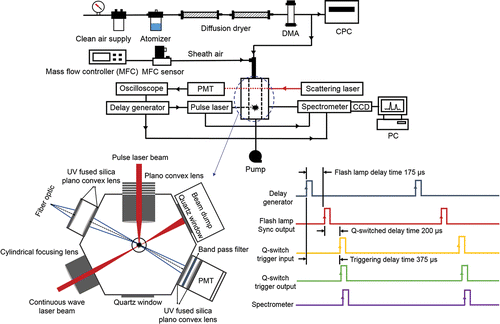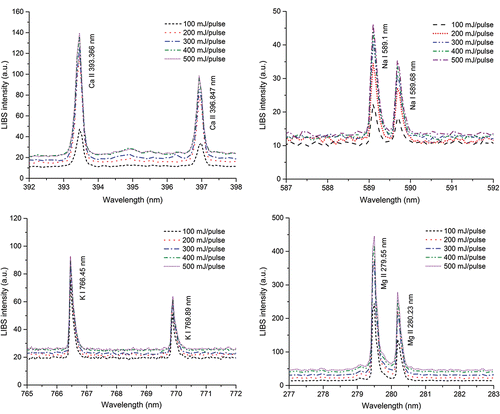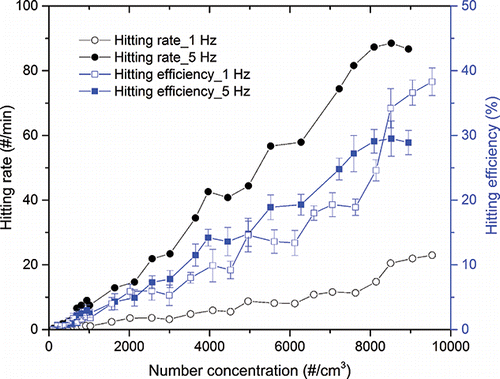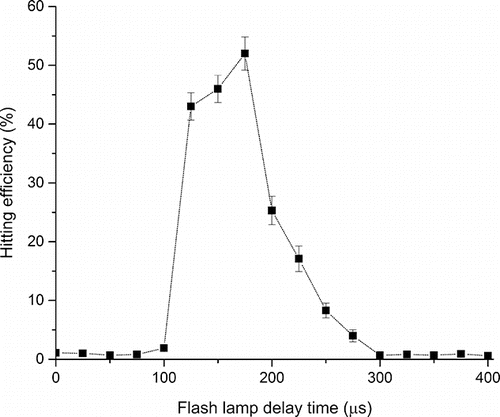Figures & data
Figure 1. A schematic of experiment setup including a top view of an aerosol chamber and a trigger/pulse timing diagram.

Table 1. A summary of parameters used for the triggering LIBS system.
Figure 2. LIBS spectra for particles (NaCl, MgCl2, KCl, and CaCl2) with different values of the pulse laser energy under the free-firing laser condition (1 Hz).

Figure 3. (a) Hitting efficiency of particles (350 nm CaCl2 particles), and (b) peak area of Ca in LIBS spectra with varying number concentrations under the free-firing laser condition (1 Hz).

Figure 4. Comparison of hitting efficiency (%) and hitting rate of CaCl2 particles under free firing laser conditions (1 Hz versus 5 Hz) with varying number concentrations.



